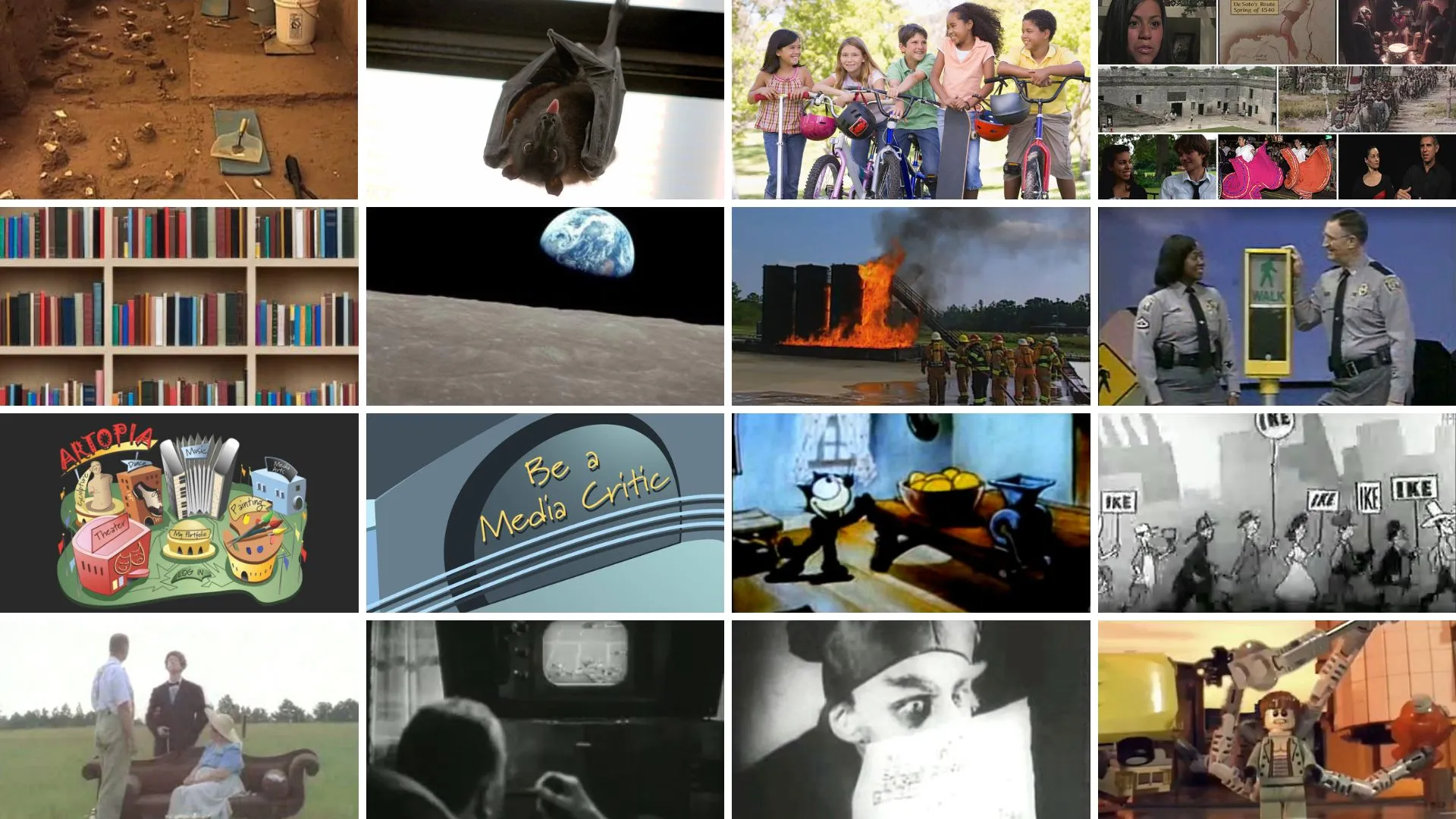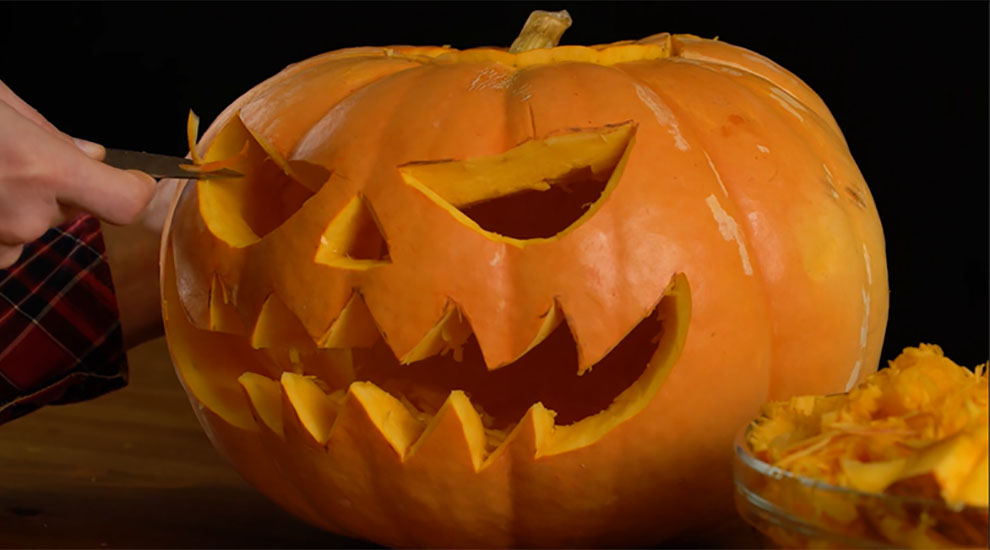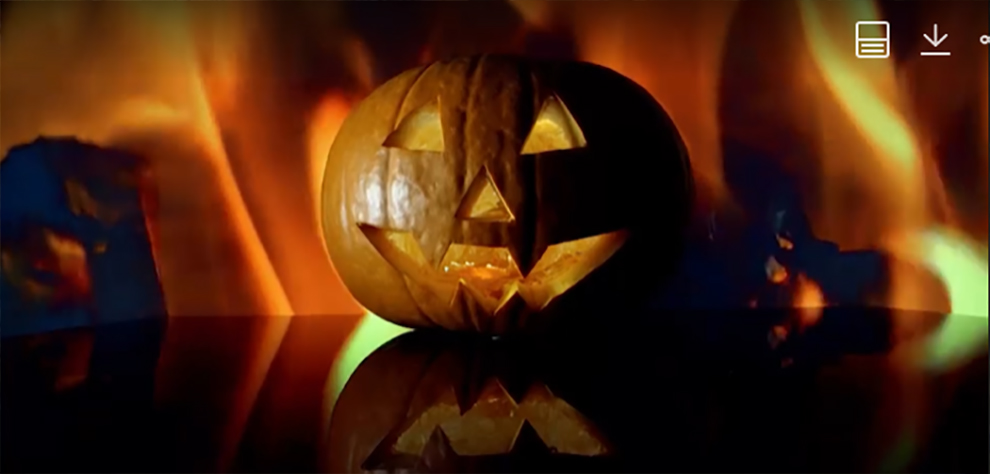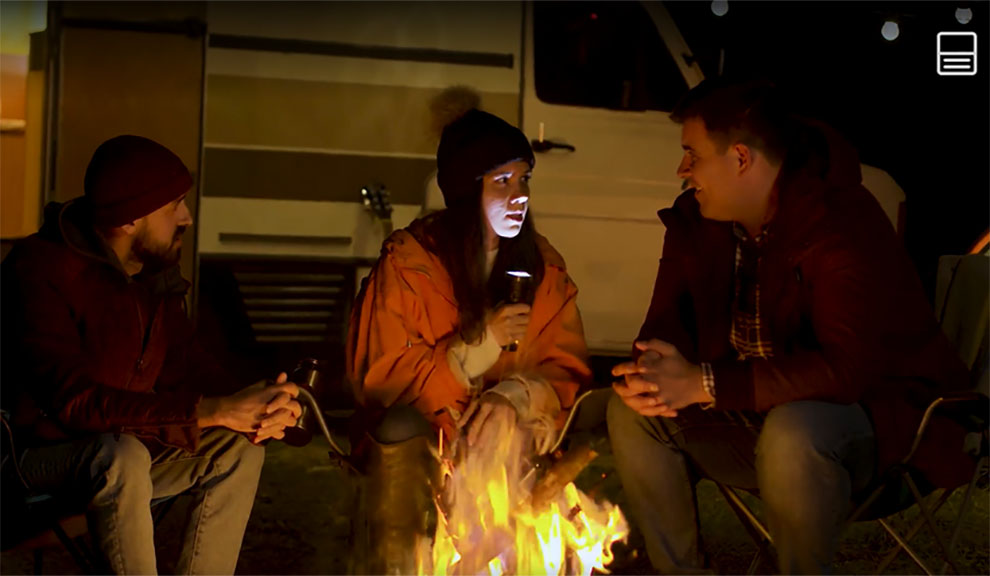
OCTOBER 2024 ON KNOWITALL.ORG
NEW ON KNOWITALL.ORG
Click here to view the content most recently added to KnowItAll.org
Examples include:

Celebrating Modie and Delaris Johnson Risher
Lesson
Students will explore ways they can work to make their community and learn more about the life, impact, and contributions of Modie and Delaris Johnson Risher.

Sergio Hudson & the Slope Intercept Formula
Lesson
Students will shop with designer Sergio Hudson to explore and gain a deeper understanding of the slope-intercept formula.

Picking Pumpkins (Measurement)
Lesson
Students will explore the concept of measurement by using rulers and yardsticks to measure various fall-themed objects. They will learn to select the appropriate tool for different lengths and apply...

Resource Availability and Gopher Frogs: A Coastal Plain Ecosystem Lesson
Lesson
• Analyze and interpret data regarding the effects of resource availability on Gopher Frogs within the Coastal Plain ecosystem. • Understand the relationship between habitat loss and the survival of...

Civil Rights Spotlight: Modie Risher and DeLaris Johnson Rischer
Lesson
In recognition of October's Honorees for the 2024 South Carolina African American History Calendar, Modie Risher and DeLaris Johnson Rischer, students will discover the contributions and impact the...

Four-Toed Salamander | What's Wild
Video
In the serene, verdant corners of South Carolina’s wetlands, a microcosm of life unfolds. Here, numerous amphibian species rely on the abundance of moist conditions and rich vegetation including a...

Carolina Heelsplitter | What's Wild
Video
South Carolina's freshwater ecosystems are a lifeline for countless species, providing clean water, habitat, and a delicate balance essential for biodiversity. In these serene waters, the Carolina...

Exploring Freshwater Bryozoans: Adaptations and Reproduction
Lesson
Students will explore the unique adaptations and reproductive strategies of freshwater bryozoans through hands-on activities, group discussions, and research. They will engage with live specimens...

The Bobcat Conservation Challenge: Understanding Ecosystems and Adaptation
Lesson
This lesson will explore the ecosystems of South Carolina’s barrier islands, focusing on the bobcat as an apex predator and the conservation efforts being made to protect its population. Students will...
More new content is available here.
FEATURED THIS MONTH ON KNOWITALL.ORG

The History of the Jack-O-Lantern | History In A Nutshell Shorts
Where did the Halloween tradition of carving faces into pumpkins and lighting them up come from?
This custom stems from the old European legend of "Stingy Jack" or "Jack of the Lantern". In the tale, Jack was a man who was so mean, he was banned from both Heaven and Hell. A man as awful as Jack could not be allowed into Heaven, however he could not enter Hell either since Jack tricked the Devil into being unable to claim his soul. As a result, Jack was doomed to roam the earth for the rest of eternity. In the story, the Devil took pity on Jack; scooped up an ember from Hell and gave it to Jack who placed it in a hollowed out turnip to light his way.
Originally, Europeans carved faces into hollowed out turnips or potatoes and placed candles in them on Halloween night. It was believed that these scary, illuminated faces in windows and doorsteps would frighten away Stingy Jack and other malevolent spirits. Irish and Scottish immigrants brought these old world customs with them to the U.S. in the late 19th and early 20th centuries. Soon after their arrival, these immigrants discovered that the pumpkin- a fruit native to North America proved much easier to hollow out than turnips. The new world experienced infusion with the old, and this is why the Jack-O-Lantern remains arguably the most prominent symbol of the Halloween holiday!

The Story of a SC State Fair Icon | History In A Nutshell Shorts
“Meet me at the rocket!” Visitors to the South Carolina State Fair may have heard those famous words. Fair-goers have used this rocket as a popular rendezvous point ever since it was placed there.
Before it became a rallying point for state fair visitors, it was an intermediate range ballistic missile for the U.S. Air Force. Designed by Dr. Wernher Von Braun (the same von Braun who designed the rockets which carried astronauts to the moon!) and built by Chrysler, this Jupiter missile’s original purpose was to carry nuclear payloads. The rocket’s name, believe it or not, is Columbia! The Air Force retired Columbia in 1963 and donated it to the city which shares its namesake. It was erected in 1969 and has served as a staple symbol of the SC State Fair ever since!

Where Did The Name Halloween Come From? | History In A Nutshell Shorts
Through a bizarre twist in history, the Catholic Church contributed just as much as Pagans did to the Halloween we know today! In the Catholic Church's early years, missionaries journeyed out to convert Pagans to Christianity. At first missionaries adapted or reimagined Pagan customs instead of outright stamping them out, however results from these early missions were mixed. Pope Gregory III decided to officially convert the Pagan holiday, Samhain into a holiday for Christians. November 1 was designated “All Saints Day” – a day to honor all the saints as well as Christian martyrs. All Saints Day is also known as All Hallows Day; the night before being called All Hallow’s Evening. With a series of language corruptions throughout the following years, All Hallow’s Evening disambiguated into the name Halloween!
Despite the efforts of the Catholic Church to squelch Samhain traditions, the practices never fully went away completely.

Why Do We Like to Tell Scary Stories on Halloween? | History In A Nutshell Shorts
One possible origin for telling scary stories around Halloween is found thousands of years ago with the Celts of ancient Ireland! These Celtic Pagans worshipped the earth, and during their festival called Samhain they built bonfires and held ritual sacrifices to pay homage to their gods as well as the dead. Celtic priests called “Druids” would read the entrails of sacrificed animals to predict the future. The Celts believed that the best time for predicting the future was when the veil between our world and the spirit world was at its thinnest! The prophecies read by the Druids would spread through Celt villages becoming stories told long into the night. If you enjoy scary stories on Halloween, you might consider thanking the Celts!
WHAT'S WILD
Experience the wonder! Explore the spectacular! “What’s Wild” features South Carolina’s rarest wildlife and the amazing people who protect them.
Did you know Bobcats can be found on Kiawah Island? Every year Wildlife Management of the Town of Kiawah Island conducts research on their local bobcat population by catching them with live animal traps. Research is used to combat rodenticides harming these apex predators.
Discover the unique larvae stage of this aquatic insect in this episode of What’s Wild and find out how these underwater architects craft exquisite cases from materials in their environment. Dive into the complete lifecycle of the Caddisfly and its critical role in maintaining healthy freshwater ecosystems. Meet the dedicated entomologists in the Palmetto State who study these fascinating creatures, using them as vital indicators of water quality. Additionally, hear the story of a local artisan who transforms Caddisfly cases into beautiful pieces of jewelry blending nature and artistry in a stunning showcase of creativity.
South Carolina's freshwater ecosystems are a lifeline for countless species, providing clean water, habitat, and a delicate balance essential for biodiversity. In these serene waters, the Carolina Heelsplitter, a small yet significant freshwater mussel, makes its home. Unfortunately, this remarkable species faces numerous challenges, from habitat destruction to pollution, threatening its very existence. However, dedicated conservation efforts are underway, striving to restore and protect the heelsplitter's dwindling population and the health of our vital waterways in the wild.
In this episode of What’s Wild, discover the world of ferns and the fascinating reproduction methods of these ancient plants that have been on Earth for millions of years. Learn about the unique characteristics that make ferns stand out in the plant kingdom, from their intricate fronds to their spore-based reproduction cycle. Explore the rich history and enduring presence of ferns in South Carolina's diverse ecosystems and gain a deeper appreciation for these remarkable plants and their role in maintaining the balance and beauty of our natural world.
In the serene, verdant corners of South Carolina’s wetlands, a microcosm of life unfolds. Here, numerous amphibian species rely on the abundance of moist conditions and rich vegetation including a small but fascinating creature—the 4-toed salamander. Like many amphibians, 4-toed salamanders occupy a vital role in their ecosystems, acting as indicators of environmental health and contributing to the balance of both aquatic and terrestrial habitats. However, the delicate balance of their habitats is increasingly under threat. Amphibians are highly sensitive to changes in their environment, making them particularly vulnerable to habitat loss, pollution, and climate change. To help protect this species, dedicated biologists from the South Carolina Department of Natural Resources are diligently collecting vital data, ensuring that this remarkable creature continues to flourish in the wild.
Dive into the diverse world of freshwater fish in South Carolina in this episode of What’s Wild, exploring the vital habitats of rivers, streams, and watersheds. Discover the unique and remarkable Bluehead Chub, a fish known for its unusual behavior of building underwater nests. Learn about the critical role freshwater ecosystems play in maintaining biodiversity and supporting the health of our environment. Explore how the South Carolina Department of Natural Resources conducts stream assessments to gather essential information for managing and conserving the state's aquatic natural resources.
The Coastal Plain of South Carolina is an ecologically rich landscape stretching from the inland sandhills to the coastal marshes along the Atlantic Ocean. This vast expanse, characterized by its flat terrain and diverse wetland systems, harbors a mosaic of unique habitats. Among these, the longleaf pine forests, cypress swamps, and mysterious Carolina bays create a haven for an extraordinary array of wildlife. Here, hidden within this intricate ecosystem, lives one of nature's most elusive and fascinating creatures – the Gopher Frog. Adapted to thrive in the isolated, ephemeral wetlands and sandy soils of the Coastal Plain, these remarkable amphibians face a perilous existence. Despite their remarkable adaptability, Gopher Frogs are now teetering on the brink of extinction mainly due to the loss of seasonal wetland habitat used for breeding. But hope is not lost. Through remarkable collaboration efforts, dedicated biologists and conservationists are employing innovative strategies to give these amphibians a fighting chance at survival in the wild.
Throughout the southeastern United States, including South Carolina, people frequently encounter a small yet captivating creature: the Green Anole. Whether darting across garden fences, sunbathing on porch railings, or climbing tree trunks, these lizards are a common sight. Despite their everyday presence, the Green Anole possesses a range of intriguing behaviors and characteristics that make it a true gem of the wild.
VIEW OUR FEATURED COLLECTIONS FOR OCTOBER
Archaeology Month
- View our Archaeology Collection on KnowItAll.org!
Bat Appreciation Month
Health Literacy Month
- View our Knowitall Healthy! Collection.
Hispanic Heritage Month
- View our Hispanic Heritage Collection!
International Walk to School Month
- View these resources and be safe when walking or biking!
- View Pedestrian Safety | Safety City
- View Meet the Helpers for information about helpers in your community and school!
National Book Month
- Visit Our Libraries, Literature & Learning Collection!
National Bullying Prevention Month
- Chester Raccoon and the Big Bad Bully | Storytime with SCETV
- Lesson: Bullying and What It Means to be a Bystander
- Lesson: Learning to Respect through Literature
- View "Project Lead SC." Teenage girls face unique pressures every day. Between issues with bullying, body image, boys, friends and “frenemies,” life during that awkward transitional period can feel like it’s filled with challenges. Project Lead SC is a video series for young women that follows notable women in South Carolina to gather advice about what makes a successful leader.
National Domestic Violence Awareness Month
- Pulitzer Prize Winners in South Carolina: Reporting
- Tabu Hazel, Spoken Word Artist | Original SC
- Teen Dating Violence | Palmetto Scene
- What Is Human Trafficking? | Palmetto Scene
National Economic Education Month
- View the collection and be sure to check out the series and programs listed to learn more!
TeenTober
- View the resources in the Libraries, Literature & Learning Collection and see what may be of interest to teens you know and love!
World Space Week
Fire Prevention Week
- Fire and 911 Safety | Safety City
- Fire Academy, Part 1 from Project Discovery
- Fire Academy, Part 2 from Project Discovery
America's Safe Schools Week
- View our America's Safe Schools Week Collection.
- Safety Collection | Knowitall Healthy!
National Friends of Libraries Week
- Visit our Libraries, Literature & Learning Collection!
National School Bus Safety Week
Media Literacy Week
In Artopia: Media Arts: Be A Media Critic, take a closer look at types of media like photography, radio, film, and television:
Animation is a series of stills that fool the eye into thinking it sees movement. The Goose That Laid the Golden Egg is a cel animation. Drawings are done directly onto clear acetate sheets or cels, with a new sheet for each movement. The backgrounds are usually watercolor paintings. The cels are laid over the background and photographed one at a time by the animation camera. Can you see how the backgrounds in this cartoon stay still while the characters move in front of them?
A poll taken in 1952 found Dwight D. Eisenhower to be the most admired living American, a World War II hero who played a key role in the victory of the Allied Forces. In 1952 the country was in the middle of the Korean War and the McCarthy Hearings, and there were reports of widespread political corruption. Ike pledged to end the war and clean up Washington. His campaign was the first to use short, well-produced TV ads. How much credit should they get for his victory?
Comedy is sometimes funnier if you can't see everything. Filmmaker Lynn Cornfoot uses off-screen action to increase the comic effect in her film Love. We can only imagine what the Wife's feet must look like as the Husband works on them with a pair of giant clippers, an electric sander and a blowtorch. The fact that she looks blissful makes the apparently painful operation even funnier.
The man trying to buy a ticket to a ball game at the beginning of Magic in the Air was an unusual person for his day -- he owned a TV set. This industrial film does a good job of explaining how this new medium of television worked. Who do you think the film was made for? How many people today understand how technology works? Do you know how your cell phone works? Would you like to see a film that explains it?
This TV commercial for Newport menthol cigarettes aired during the 1960s. Today these old ads can tell us something about who tobacco companies were selling their cigarettes to. This one features a middle-aged guy who looks like he might work in a factory or car repair shop. A pretty young girl on a billboard blows some second-hand smoke into his face and suddenly he’s watching a couple on the beach having a great time smoking Newports. Could it be a fantasy for working class men?
F.W. Murnau shot much of Nosferatu on location in the Carpathian Mountains of Romania, using real landscapes and towns and an actual castle. This was unusual for the time and adds a great deal to the atmosphere of the movie. Max Schreck, whose name means "terror" in German, brings a nightmarish quality to the vampire with his rat-like face and long fingers. Murnau, like other expressionist filmmakers, worked on a small budget but his visual genius made up for it.
Spider-Man: The Peril of Doc Ock is a stop motion LEGO short, by Spite Your Face Productions Ltd, commissioned by Sony Pictures/Marvel Studios/The Lego Group to accompany the release of Sam Raimi's Spider-Man 2. It was written, produced, animated, edited and directed by Tim Drage and Tony Mines. Computer animation is by Peter Moran. Assistant Animators are Tom Bevan and Gordon Emmanuel. The original soundtrack is by Jason Graves at Rednote Audio. Sound Effects are by Tim Drage and Luke Oram.
Critical viewing means taking a closer look, not being critical. It means that you are an active, rather than passive viewer. Active viewing means that you study the elements, in this case, an advertisement for tobacco, and ask yourself a series of questions, each designed to elicit important clues and other information.
Critical viewing means taking a closer look, not being critical. It means that you are an active, rather than passive viewer. Active viewing means that you study the elements, in this case, an advertisement for tobacco, and ask yourself a series of questions, each designed to elicit important clues and other information. Take a critical look at the four cigarette ads above.
Download the Google Docs worksheet to record your responses.
- What is happening in the ad? Why did the makers of the ad choose this scene?
- What creative techniques are used to get your attention?
- Who is the target audience? What is the purpose of the advertisement?
- What lifestyles, values and points of view are presented in the ad?
- How does the advertisement make you feel?
- Media Arts Word Bank
- Media Arts: Film and TV Word Bank
- Media Arts: Photography Word Bank
- Media Arts: Write About It Worksheet for Google Docs
This picture, like all the photos in the Copia series, is candid, meaning it isn't posed. Brian Ulrich shot the series using a waist-level viewfinder so that he did not have to hold the camera up to his face. This technique makes it less obvious that a picture is being taken. Do you think the girl in the picture knows she is being photographed? How can you tell? Whom do you think the arms on the left side of the photo belong to? Does anyone in the picture seem to be aware of the camera?
Dorothea Lange has been called the greatest American documentary photographer, in part because her pictures gave dignity to people who had lost everything. This family may have fled to Mississippi from the terrible drought and dust bowls that ruined farms in the Midwest during the 1930's. Notice the angle of the photograph. A low angle shot like this makes the subjects appear to tower over the viewer. How does it make you feel about the people in the picture?
James Van Der Zee once said, "I tried to pose each person in such a way as to tell a story." In the studio he used elaborate backdrops and scenery but in this photograph the studio is the street and a shiny Cadillac provides the scenery. The man is partially hidden inside the car but we can tell he is wrapped in a fur coat like the woman's. The year is 1932, during the Great Depression. What story does this couple tell us?
Icy Night has many of the qualities of the sort of photograph Alfred Stieglitz and his fellow “Pictorialists” liked to take. They believed the photographer could shape everyday scenes like this city street, thereby creating a work of art. They strived for a mysterious mood with lots of dark areas such as the tops of trees in this picture. The shadows cast by the trees also add to the dark atmosphere of the photograph. What other techniques does Stieglitz use to create a particular feeling in Icy Night?
This Daguerreotype of a Parisian Boulevard is an early experiment by Louis Daguerre. His pictures required a very long exposure time. That's why the street seems empty - anything moving would have appeared invisible because the camera's shutter stayed open so long. If you look at the full screen view of the picture, in the bottom left section you can see a man getting his shoes shined - we can see him because he was standing still for quite a while..
Rosa is a picture within a picture. At first we see a person in costume, make-up and sunglasses. But there is another picture. Reflected in the lens of the glasses you can see a street with people milling about. This image places the picture outside, possibly during Mardi Gras. You can also see a man in a yellow tee shirt. Can you tell what he's holding? How does it make you feel when a photograph has mysterious elements?
Tetons and the Snake River is one of Ansel Adams' great western landscape photographs. The image seems to go on to infinity, absolutely sharp and clear. It is interesting to compare this picture to Icy Night by Alfred Stieglitz. While Stieglitz uses natural elements such as mist and shadows to create a mysterious mood, Adams' picture shows nature in full sunlight. Yet a dark cloud over the mountains adds drama. Imagine removing that cloud - how does it change the picture?
Every photograph has a point of view. We see it from the position of the the photographer's eye. Deborah Willis stood in the pulpit of a small church in a little town in Florida, giving us the preacher's view of the pews. But the title of the picture tells us something more. Eatonville, Florida is the first incorporated black town in America and was the home of novelist Zora Neale Hurston. This is another way in which the photograph connects us to African American culture and history.
Apparently, the fact that the players in this rugby game were wearing dresses didn't diminish the intensity of the rivalry between the teams. Photographer Bill Frakes has captured a moment of dramatic action - the players' bodies are all in motion and their faces wear expressions of deep concentration. Yet the fact that they are wearing formal gowns adds humor for the viewer, if not for the players themselves..
Who are the men in this photograph? In Gardner's Photographic Sketch Book of the War, Alexander Gardner describes them as Confederate soldiers. However, there is another picture in the book that appears to be the same photograph taken from a different angle. Gardner describes the men in the second photo as Union soldiers. We can't know if Gardner meant to mislead his readers, but we can learn something about how easy it is to "read" photographs in different ways.
John F. Kennedy rode to his inauguration with the outgoing president, Dwight Eisenhower. Robert Frost read one of his poems at the ceremony. Frost had written a poem for the occasion called "Dedication." As he approached the microphone he was blinded by the sun's glare and he was unable to read it and recited instead "The Gift Outright," from memory. In this picture Vice President Lyndon B. Johnson is to the right of Kennedy. Can you recognize anyone else?
Today it’s hard to believe Orson Welles’ broadcast of The War of the Worlds caused a nationwide panic. We are used to media productions that are not what they seem to be. "Reality TV" programs show us people trying to "survive" on desert islands, but we know cameras are watching every move they make. Computer enhancement makes babies, dogs and pigs appear to talk and we find it funny. Can you think of a media production today that could fool the whole country?
This American Life first aired in 1995 on public radio station WBEZ Chicago. The producers write on their website, "We're not really formatted like other radio shows at all. Instead, we do these stories that are like movies for radio. There are people in dramatic situations where things happen to them...what we're doing is applying the tools of journalism to everyday lives, personal lives." What do you think they mean? What tools of journalism do they refer to?
- Students Should Know - Short media literacy-related videos that are appropriate for the classroom
Be sure to view the October Factoids for all of the October observances and links to resources!
Factoids for the full year are available here.
TO GET THE MOST OUT OF KNOWITALL, BE SURE TO EXPLORE THESE AREAS!
Lesson plans for teachers that meet South Carolina standards.
Find featured content and helpful information on using KnowItAll.org throughout the month!
From the top of the home page, click on the magnifying glass, and when the search box opens, click on the magnifying glass again, and the results will come up, showing all of the assets available on KnowItAll.org. The newest content will appear at the top of the results. Just scroll down to view all of the content that is new to you! Visit often, so you won’t miss a thing!
The Learning Continues on KnowItAll.org!
Please share our blogs with your friends and let them know what you found to be helpful on KnowItAll.org!
We encourage you to link to KnowItAll.org on your teacher pages and on school and district websites. Thank you!
Please Contact Us if we can assist in any way! We would love to hear from you!





